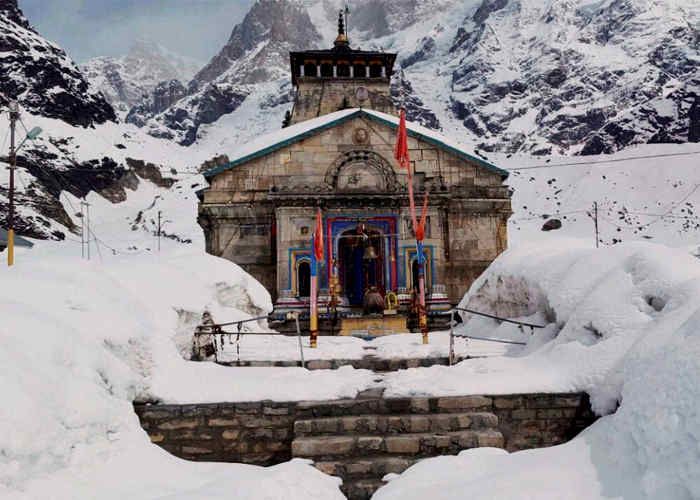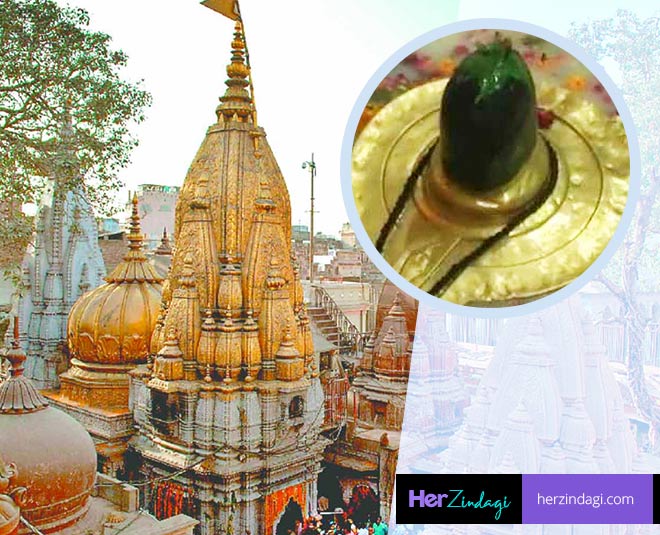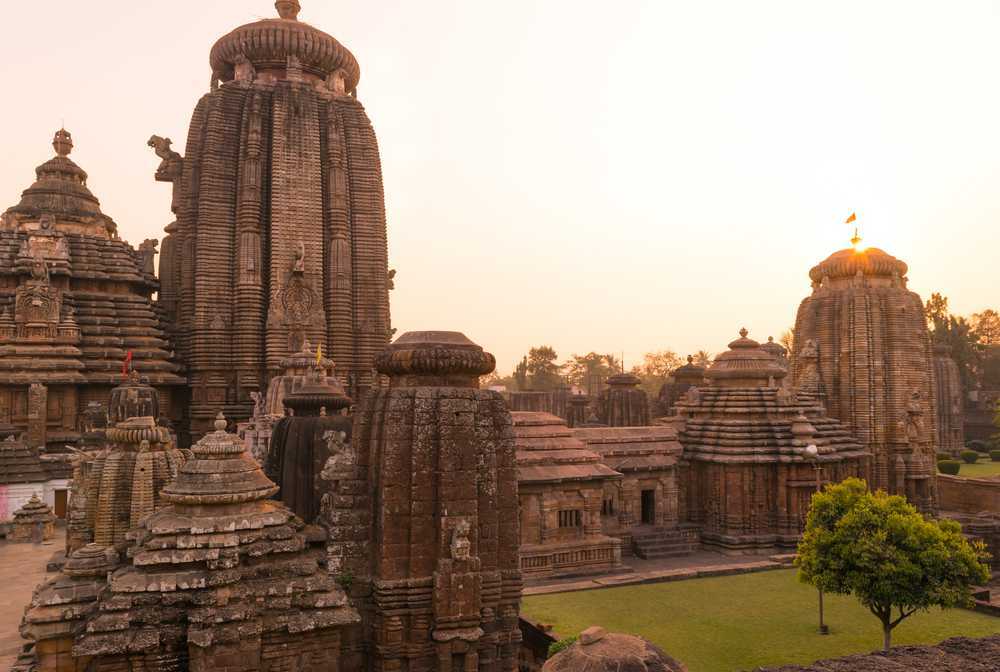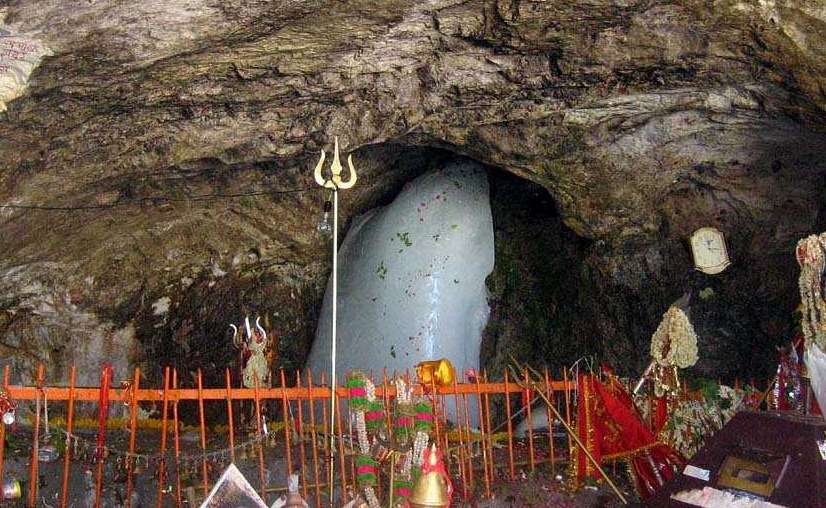TOP 10 FAMOUS TEMPLE OF INDIA
TOP 10 TEMPLES IN INDIA
TOP 10 TEMPLES IN INDIA
1. BADRINATH
Badrinath or Badrinarayan Temple is a Hindu temple located on the banks of the Alaknanda River in Chamoli district of the Indian state of Uttarakhand. It is a temple dedicated to the Hindu deity Vishnu and this place is one of the most sacred places mentioned in this religion, Char Dham, it is an ancient temple, which is found in the 7th-8th century. In the name of the temple, the city around it is also called Badrinath. Geographically, this place is situated at an elevation of 3,133 meters (10,269 feet) above sea level, in the Garhwal region, between the high peaks of the Himalayan ranges. The temple remains open for a limited period of six months of the year (from late April to early November) due to the harsh weather conditions of the Himalayan region during winter. It is one of the busiest pilgrimage centers in India; In 2012, the arrival of about 10.4 lakh pilgrims was recorded here.
The Badrinath temple worships "Badrinarayan", a form of Vishnu, the god of Hinduism. Here is his 1 meter (3.3 ft) long statue built from Shaligram, which is believed to have been established by Adi Shankaracharya from the nearest Narada Kund in the 7th century. This idol is considered by many Hindus to be one of the eight self-expressed regions (self-manifested statues) of Vishnu. Although the temple is located in North India, the chief priests here called "Rawal" are Brahmins of the Namboodari sect of the state of Kerala in South India. The Badrinath Temple was included in the Uttar Pradesh State Government Act - 30/199 under the Temple Act - 18/1939, which later came to be known as "Shri Badrinath and Shri Kedarnath Temple Act". Presently, a seventeen-member committee nominated by the Government of Uttarakhand administers both the Badrinath and Kedarnath temples.
This temple is mentioned in many ancient texts like Vishnu Purana, Mahabharata and Skanda Purana. Its glory is also described in the Nalayir Divya Prabandha, composed by the Alvara saints before the eighth century. Badrinath Nagar, where this temple is located, is counted among the small Char Dham in addition to the holy Char Dham of the Hindus and is also one of the 108 divine countries dedicated to Vishnu. Another concept calls this temple by the name of Badri-Vishal and associates the entire group with "Panch-Badri" with the four other nearby temples dedicated to Vishnu - Yogadhyana-Badri, Bhavishya-Badri, Vriddha-Badri and Adi Badri. is referred to as.
2. RAMESHWARAM
This article is about the place of pilgrimage. For others, see Rameswaram (disambiguation).
Sri Ramanathaswamy Temple
Ramanathar-temple.jpg
Religious information
Affiliation Hinduism
God lord shiva
Location information
Location Rameswaram City, Tamil Nadu
Architectural details
Style david architectural
Creator Lanka's King Parakramabahu
Renowner - King Udayan Sethupathi of Ramanathapuram
Established in 1173 AD
Rameswaram is a sacred pilgrimage place for Hindus. It is located in Ramanathapuram district of Tamil Nadu. This shrine is one of the four dhams of Hindus. Apart from this, the Shivalinga established here is considered to be one of the twelve Dwadash Jyotirlingas. [A] The belief of Kashi in the north of India is of Rameshwaram in the south. Rameswaram is about a quarter to four hundred miles southeast of Chennai. It is a beautiful conch shaped island surrounded by the Indian Ocean and the Bay of Bengal. Long ago the island was connected with the mainland of India, but later the waves of the ocean cut off this joining link, which surrounded it with water and became an island. Here Lord Rama had built a bridge of stones before climbing Lanka, after which the monkey army reached Lanka and got victory there. Later, Rama broke this bridge at a place called Dhanushkoti at the request of Vibhishan. Even today the remains of this 30-mile (8 km) long Adi-Setu appear in the ocean. [1] The third type of corridor of the temple here is the longest corridor in the world.
3. JAGANNATH
Puri (Puri) is a town in Puri district of Odisha state, India. It is also the headquarters of that district. [1] [2] [3]
One of the four holiest places in India is Puri, where the sea washes its feet. It is said that if a person stays here for three days and three nights, then he gets freedom from the cycle of life and death. Puri, the holy city of Lord Jagannath (Lord of the whole world), Subhadra and Balabhadra, Puri, one of the holy four dhams of the Hindus, is perhaps a place where the religious shores and 'darshans' of the sea along with its enjoyment Some religious places can also be enjoyed with a religious feeling of. Puri is a place which has been known for thousands of years by many names - Nilgiri, Neeladri, Neelachal, Purushottam, Shankhkshetra, Srikshetra, Jagannath Dham, Jagannath Puri. Puri is dominated by two superpowers, one created by God and the other created by man. Puri was originally a region ruled by the Bhil rulers, Sardar Vishwas Bhil, who received the idol of Lord Jagannathji centuries ago.
4. DWARKADHISH
Dwarkadhish Temple, also known as Jagat Mandir and sometimes spelled Dwarkadhish, is a Hindu temple dedicated to God Krishna, worshiped here by the name Dwarkadhish, or 'King of Dwarka'. The temple is located in Dwarka, Gujarat, India. The main temple of the 5-storey building supported by 72 pillars, known as Jagat Mandir or Nij Mandir, archaeological findings suggest that it is 2,200 - 2,500 years old. [1] [2] [3] The temple was expanded in the 15th-16th century. [4] [5] The Dwarkadhish temple is a Pushtimarga temple, so it follows the guidelines and rituals created by Vallabhacharya and Vithlesnath. [Citation needed] [citation needed] According to tradition, the original temple was built by Krishna's grandson. Vajranabha performed at Hari-griha (the abode of Lord Krishna). The temple became part of the Char Dham pilgrimage considered sacred by Hindus in India, with the 8th century Hindu theologian and philosopher Adi Shankaracharya visiting the temple. The other three include Rameswaram, Badrinath and Puri. Even today a memorial within the temple is dedicated to his visit. Dwarkadhish is the 98th Divya Desam of Vishnu in the subcontinent, which Divya Prabha glorifies in sacred texts.
5. SHRI VIRUPAKSHA
Virupaksha Temple is one of the famous historical temples of India and this temple has history related to the famous Vijayanagar empire. The temple is located in Hampi, Karnataka state of India, 350 kilometers from Bangalore. This temple is a main part of the group of historical monuments of Hampi, especially in the group of monuments located at Pattadakal. A temple named UNESCO, is included in the World Heritage Site. This temple is dedicated to Lord Virupaksha and his consort Goddess Pampa Virupaksha is a form of Lord Shiva. Near this temple, there are small temples dedicated to other deities. There is also a Virukshini Amma Temple (Mother's Goddess) in a village called Nalaganapalli, about 100 km from Tirupati, Chittoor district in Andhra Pradesh.
The temple is located on the banks of the Tungabhadra River, Hampi, the capital of the Vijayanagara Empire. The Vimpaksha Temple is the main center of pilgrimage in Hampi, and is considered the holiest sanctuary for centuries. The temple is still intact in the surrounding ruins and still Lord Shiva is worshiped in the temple.
The Virupaksha temple was built by Lokamahadevi, queen of Vikramaditya II. This temple was built by Rani Lokamadevi to get King Vikramaditya to win over the Pallava king of Kanchipuram. This temple, with nine levels and 50 meters high gopuram, is located at the foothills of the Hemkut hill on the southern bank of the Tungabhadra River. This temple reflects the South Indian Dravidian architectural style and is built of brick and lime. The temple has a fluid style of architecture and resembles the style of the famous Pallava temple of Kailasanath in Kanchipuram.
The gopuram of the entrance of Virupaksha temple is surrounded by huge rocks placed on Hemkuta hills and other surrounding hills and the balance of rocks is astonishing. During his consecration in 1509, Krishnadeva Raya built the Gopuda of this place.
The summit of Virupaksha Temple is 50 meters high from the ground. There are many small temples inside this huge temple, which is even older than Virupaksha temple. The temple is also known as the "Pumpapati Temple", it is located in the lower part of Hemkuta hills.
It is believed that Lord Vishnu considered this place too big for his stay and returned to his home. There is also an underground Shiva temple in Virupaksha Temple. A large part of the temple is contained in water, so no one can go there. The temperature of this part of the temple is very low compared to the outside.
6. BRAHMAJI TEMPLE
In an area in northwestern India lies the town of Pushkar. The town itself is home to one of it’s most prized residents, its sacred lake.
Nestled next to this sacred space is one of the most famous temples in India that’s dedicated to Brahma.
Legends give different reasons as to why Vishnu and Shiva have so many temples, while Brahma has just a mere few. It’s thought because Brahma was the ‘creator’, his job has already been done, whereas Vishnu and Shiva still had plenty of work to do.



Lingaraja Temple is a Hindu temple dedicated to Shiva and is one of the oldest temples in Bhubaneswar, the capital of the Indian state of Odisha. The temple is the most prominent landmark of Bhubaneswar city and one of the major tourist attractions of the state.[1][2][3]
The Lingaraja temple is the largest temple in Bhubaneswar. The central tower of the temple is 180 ft (55 m) tall. The temple represents the quintessence of the Kalinga architecture and culminating the medieval stages of the architectural tradition at Bhubaneswar.[4] The temple is believed to be built by the kings from the Somavamsi dynasty, with later additions from the Ganga rulers. The temple is built in the Deula style that has four components namely, vimana (structure containing the sanctum), jagamohana (assembly hall), natamandira (festival hall) and bhoga-mandapa (hall of offerings), each increasing in the height to its predecessor. The temple complex has 50 other shrines and is enclosed by a large compound wall.
10. AMARNATH CAVE TEMPLE

Amarnath cave is a Hindu shrine located in Jammu and Kashmir, India. The cave is situated at an altitude of 3,888 m (12,756 ft),[1] about 141 km (88 mi) from Srinagar, the summer capital of Jammu and Kashmir and reached through Pahalgam town. The shrine forms an important part of Hinduism,[2] and is considered to be one of the holiest shrines in Hinduism.[3] The cave is surrounded by snowy mountains. The cave itself is covered with snow most of the year except for a short period of time in summer when it is open for pilgrims. Hundreds of thousands of Hindu and other devotees make an annual pilgrimage to the Amarnath cave across challenging mountainous terrain.
nice
ReplyDeleteThanks
ReplyDeleteThanks for giving information
ReplyDeleteधन्यवाद
ReplyDeleteNice
ReplyDelete